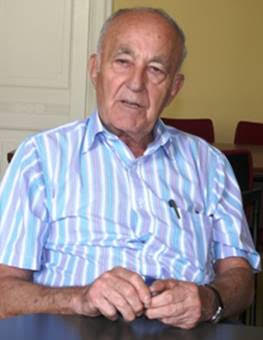
THE VOICE OF INTERNATIONAL LITHUANIA
|
VilNews has its own Google archive! Type a word in the above search box to find any article.
You can also follow us on Facebook. We have two different pages. Click to open and join.
|
Archive for February, 2012
How do Baltic presidents get airborne?
- Posted by - (0) Comment

The life of the president of any country is impossible without international visits, which are simply impossible to implement without the achievements of modern civilization - the planes and helicopters. In this regard, Belarusian “Telegraf” journalists have decided to find out, what aircraft high-ranking officials of Belarus and its neighboring states travel by.
- Bookmark :
- Digg
- del.icio.us
- Stumbleupon
- Redit it
Grybauskaite flies economy class!
- Posted by - (0) Comment
![]()
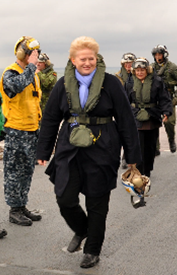
President Grybauskaite aboard the amphibious command ship USS Mount Whitney.
U.S. Navy photo by Mass Communication Specialist 2nd Class Sylvia Nealy/Released
President of Dalia Grybauskaite flies by regular air-liners. In Europe, she enjoys the economy-class, outside the continent – business-class.
However, it is exactly economy class that Grybauskaite has used for her first overseas visits to Sweden and Latvia. At the same time, her flight from Vilnius to Stockholm cost $330.
The reason for this is that the Cabinet has considered a private jet too big a luxury for the country.
For flights Grybauskaite employs cruise aircraft airlines Aeroservisas. If the President landed in a country only in order to transfer to the other aircraft at the airport it is usually only meets Lithuania's Ambassador to this country.
In turn, the airline offers a small airplane of business-class "Cessna 560 Citation V," designed for seven to eight passengers among the country's highest officials. At the same time Aeroservisas director Ben Laurinaytis reported that the plane hadn’t been bought specifically for presidential use. "This is a new product, offered by Aeroservisas to its customers," he said in 2009.
- Bookmark :
- Digg
- del.icio.us
- Stumbleupon
- Redit it
- Posted by - (4) Comment
11 March marks the restoration of
Lithuania's independence – how can the
authorities allow neo-Nazis to dominate
this important day for the nation?
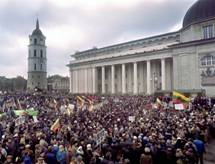 Lithuanians marching for freedom, 10 January 1990. Photo: Vitaly Armand/AFP/Getty Images |
 Neo-Nazis marching in Vilnius 11 March 2010. Photo: http://defendinghistory.com |
For the fifth time in the past five years a neo-Nazi parade (this year with a permit enabling a maximum of 2,000 participants) will march through the heart of Vilnius on 11 March, Independence Day, one of the proudest and most significant days for the people of Lithuania. The neo-Nazi theme will be “Homeland.”
Their display, if permitted by the government, will be taken by extremists throughout the region and Europe as a stamp of growing approval of neo-Nazi activities and a signal that the murder of about 95% of Lithuania’s Jewry during the Holocaust, largely by local collaborators, is taken lightly by today’s government.
Help us ban this blemish on a day reserved for the celebration of the internationally acclaimed bravery of the March 11th 1990 declaration of independence that was and continues to be a source of inspiration to all nations seeking freedom from oppression and foreign domination. Allow Lithuania a Day of Dignity.
Help combat racism and anti-Semitism with your signature to the following petition. You’ll find the petition text HERE.
11 March is not a day to
glorify the perpetrators

By Olga Zabludoff
When I learned that the municipality of Vilnius had again issued permits for a neo-Nazi march on Lithuania’s March 11th Independence Day, I was disturbed for more than one reason. Why would the government, which has been purporting its wish for reconciliation with its small Lithuanian Jewish community and Jews everywhere, sanction the resurrection of a Holocaust image? Why would the government, which has been purporting its wish to better its tarnished image with worldwide Jewry, accept and endorse the display of the LAF white armbands imprinted with the flaming swastika? Most survivors of the Lithuanian Holocaust are more traumatized by memories of the white-armbanded Lithuanian Activist Front than by memories of Hitler’s Aryan henchmen. It was the local LAF murderers who began to butcher Jews who had been their neighbors -- this even before their German Nazi masters/commanders came upon the scene. It was the LAF who unleashed the Holocaust in Lithuania. It was then that their slogan was born: “Lithuania for Lithuanians!” (Lietuva Lietuviams).
I am well aware of the constitutional right of free speech granted to all citizens in democratic countries. That is not even the issue here. All groups, no matter how repugnant their agendas, have the right to march and to chant. However, the government has the right to regulate when and where they march and chant. Independence Day in Lithuania is a special day on the calendar – a day to commemorate its freedom after nearly 50 years of Soviet repression. It is not a day to glorify the perpetrators and their nightmarish actions that led to the extermination of 95% of Lithuanian Jews and the large proportion of the country’s other ethnic minorities during WW2. It is not a day to honor the Nazi collaborators armed with their nauseating symbols and sickening chants. Is this under the guise of “patriotism” or a flawed, sinister concept of patriotism?
The government should not so appease neo-Nazis as to allow them to take over the heart of Vilnius on the sacred Independence Day, March 11. Under the permit issued by the government, up to 2,000 neo-Nazis are permitted to parade along Gedimino Prospect during prime time. Sure, they should be allowed to demonstrate, but on another day and at another location. Why is it that the human rights activists who plan to counter-march in Vilnius have been relegated to a much later hour -- long after the neo-Nazi procession has left its footprints on Vilnius’s major boulevard? Why is there no accommodation for the human rights community to look the neo-Nazis in the face and peacefully and legally confront them?
The governments in various cities in Germany have taken actions regarding neo-Nazi marches: they do not permit these parades along major boulevards. Some 40 years ago in Skokie, Illinois, USA (a community with a large number of Holocaust survivors), a group of fascists applied for a permit to march. After years of legal battles, permission for the march was rejected in Skokie. Instead, the group was permitted to march in a secluded area outside of Chicago. In my country there are neo-Nazis too as well as white supremacist groups and other organizations that promote hatred, intolerance and bigotry. But you don’t see them marching down Pennsylvania Avenue in Washington, DC, on July 4 – our Independence Day.
Appalled by the government’s tacit approval of annual Independence Day neo-Nazi marches since 2008, I launched, in partnership with DefendingHistory.com, a petition to the Lithuanian Ambassador to the United States urging him to persuade his government to ban the 2012 Vilnius march. On the internet some opponents have asked why a foreigner would dare to interfere in their country’s policies and politics. The answer is very simple for me: Exactly 70 years ago the world remained silent while millions of human beings were gassed in death factories and exterminated in killing fields. We all live on the same planet. We are governed by human rights which have no boundaries.
Let me tell you what I have learned from the petition. If the theme of a petition strikes a universal chord, it travels far and wide, finding its way into remote places on the planet. It takes on a life of its own and connects strangers to one another through a common cause. In the first ten days of its life, the petition drew more than a thousand signatures from 42 countries on every continent. Many were accompanied by poignant statements (reasons for signing the petition). In some cases a single email or post, either from me or from a second party, can generate 50 signatures, and those 50 signatures can multiply into hundreds more.
“This is MY country and if I sign your petition,
I will have problems, you understand?”
I stumbled onto a few Lithuanian Facebook websites and posted on their walls. First came a flurry of “Likes.” I had ventured into a network of Lithuanian youth. Then one of them asked: “This is MY country and if I sign your petition, I will have problems, you understand?” I responded that if he believed he would have problems, he should not sign. Within ten minutes his signature came in, followed in rapid succession by half a dozen others from the same town. In unity they felt empowered to speak their collective mind.
This kind of banding together for strength should send a signal to the government in Vilnius that their decent citizens want no part of resurrecting and glorifying neo-fascists. These young men and women are the true patriots who realize that their government’s sponsorship of neo-Nazism will ultimately bring their country down.
Here are some comments from Lithuanians who have signed the petition:
“I am signing because I love my country.”
“Our homeland is for all who want to live there.”
“Even in a tolerant society racial hatred cannot be tolerated.”
“I am ashamed that my nephews are growing up in Lithuania believing that such hate speech is considered ‘normal’ by the government. More should be done to support marches that are organized by tolerant Lithuanians.”
“This march is not just about racism and anti-Semitism. It’s also about homophobia, sexism, xenophobia, and an overall culture of violence, close-mindedness and hatred.”
“I have found the Lithuanian government’s failure to acknowledge and accept the Lithuanian people’s part in the only Holocaust to have taken place in Lithuania, the murder of innocent Jews during 1941 to 1944, a disgrace and a shame for all the decent folk of the country.”
“I don’t like hate and I doubly hate this because I’m ethnically Lithuanian.”
“The parade in Vilnius on Lithuanian Independence Day is a tragic continuation of centuries of anti-Semitism that has brought shame to much of Europe.”
“It is a pity that people don’t understand that Nazism will bring mankind to a catastrophe.”
“It is shameful that neo-Nazis march through the heart of Vilnius on March 11, Independence Day.”
“Live in peace and love.”
Every time a new signature is registered, the Lithuanian Ambassador to the US receives an email with the signed petition letter and comment (if one is made). Isn’t it time, Mr. Ambassador, to tell your government that the people of Lithuania do not support neo-Nazi parades? Instead of condoning these marches, Lithuanian leaders should be speaking out publicly against them -- and certainly against these marches being held in the city center of the capital on Independence Day. Instead of appeasing the ultra-nationalist factions in the country, who have a strong political voice for their numbers, leaders should lend an ear to their worthy citizens who crave tolerance and harmony. Their numbers are greater than you may wish to acknowledge. Lithuanian leaders must realize that to be a viable part of the democratic world, they must take a vigorous stance against those groups who would honour the memory of the LAF and its heinous crimes against humanity. The LAF’s legacy is Lithuania’s shame. Those courageous Lithuanians who rescued Jewish neighbors from the LAF should be Lithuania’s pride.
_______________________________________________________________________
Here is a percentage breakdown by country of the first 1,100 signatures to the petition:
United States 37.6
Lithuania 22.5 *
Israel 7.0
Latvia 5.6
United Kingdom 4.9
Canada 3.1
Russian Federation 2.8
Germany 2.5
South Africa 1.7
Australia 1.6
Estonia 1.4
Poland 1.3
Brazil 1.2
France 1.2
28 other countries 5.6
_____
100.0 %
The 28 other countries represented in the petition include: Albania, Armenia, Austria, Belarus, Belgium, Bulgaria, Burkina Faso, Czech Republic, Denmark, Dominican Republic, Finland, Greenland, Hungary, India, Ireland, Italy, Korea Republic of, Lebanon, Mexico, Moldova Republic of, Nambia, Netherlands, Norway, Portugal, Spain, Sweden, Ukraine, Uruguay.
*Includes at least 31 Lithuanians living in other countries.
_______________________________________________________________________
The petition is here:
http://www.change.org/petitions/lithuanian-ambassador-to-the-united-states-ban-neo-nazis-from-desecrating-the-dignity-of-lithuanias-independence-day
For a report on the recent neo-Nazi march which took place in Kaunas on February 16, see:
http://defendinghistory.com/300-neo-nazis-march-through-the-center-of-kaunas-on-lithuanian-independence-day-they-are-addressed-by-members-of-parliament/31188
and
http://defendinghistory.com/wp-content/uploads/2012/02/Nerijus-Povilaitis-interview-of-Dovid-Katz-on-16-Feb-2012-Lietuvos-rytas.pdf
For a parallel petition against the Waffen SS march in Riga, Latvia, please see:
http://stop16marchinriga.blogspot.com/
- Bookmark :
- Digg
- del.icio.us
- Stumbleupon
- Redit it
It is possible to offer some counterweight
- Posted by - (1) Comment
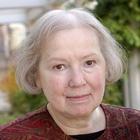
By: Myra Sklarew
When I stood in Rotuses Square in Kaunas last September, I listened to a young man speak about the burden he had carried in his young life to know that his own grandfather had been one of the killers during the War, a member of the Lithuanian Activist Front and part of a mobile killing unit. The young man asked forgiveness.
And when I stood with a group of some fifty people next to the place of massacre of over 2000 Jewish people in Kedainiai—a place where twenty-nine of my own family members were murdered, I saw how Lithuanians were making the enormous passage across time and cultural divide to embrace a wrong that they had nothing to do with. I ask myself if I have done enough in my own country to right the wrongs committed by my forebears.
Thus, when neo-Nazis march through the streets of Vilnius and Kaunas, they not only bring harm and pain to Jewish people but to Lithuanians who have made and are making efforts to come to know those who were their neighbors for centuries, as were my grandparents and their parents before them, village farmers. I thank the Lithuanians for every single effort they are making to come to terms with this past, for schoolchildren who bring small stones to the graves and massacre places on Holocaust Remembrance Day, by way of their remembrance. I thank the teachers who bring the study of those who once lived among them into the focus of learning. I thank the teacher whose students identified very single house in one village, the families who once lived there, making the hidden and anonymous past alive and literally on the map. I thank the teacher, who long before others had begun this—and not without risk-- had her students interview their grandparents about their former neighbors who often comprised half of their village.
If it is not possible to stop the Neo-Nazi march, then surely it is possible to offer some counterweight, some teaching by Lithuanians—Jewish and Christian together—in public forums and media to bring understanding and education, Of course, it would help if the Lithuanian government took a stand against these marches. Though we honor free speech in my country, the government has ways of subduing the hate--requiring a march to take place at the edge of town rather than in the center, encouraging active counterpoint and teaching. assisting those who wish to protest against hate groups that they may do so without harm. It is no secret that the demonstration of radical hate gives permission to those on the fringe of society to act against others as well. The tight power structure of the neo-Nazis where individual
identity is submerged in the power of the leader does away with any capacity for empathy.
Though we count on our leaders to offer appropriate boundaries and limits, we have learned long ago in America that change also happens through individual action, not only through dictates from above.
Myra Sklarew, USA
February 26, 2012
- Bookmark :
- Digg
- del.icio.us
- Stumbleupon
- Redit it
- Posted by - (0) Comment
Architecture carries
the identity of Lithuania
on its shoulders
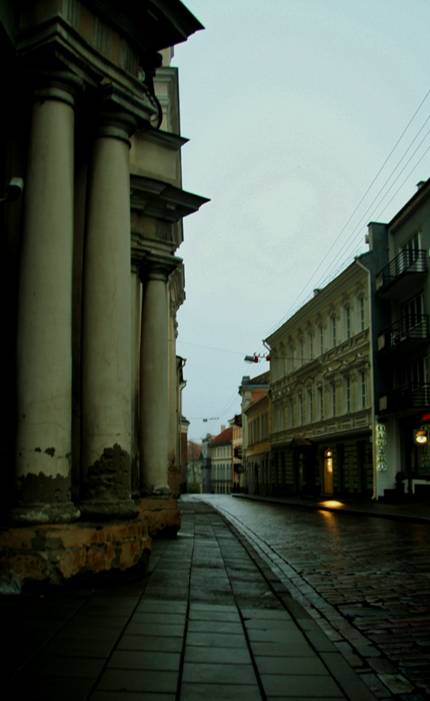
ABOVE: My first project in Vilnius Old Town, Dominikonų g. 5 , 1993-1995.
See also https://vilnews.com/?p=1549.
I had seen a lot of great architecture around the world before I came to Lithuania more than 20 years ago. Yet I had never seen a country whose identity was carried by architecture. Most countries have their unique architecture and national monuments, but here I was suddenly faced with a nation where many centuries of history and life were clearly recorded in the buildings and the surrounding, unique urban environment called the Vilnius Old Town. Walking through this exciting history book is what increasingly makes Lithuania's traditional architecture a magnet for visitors from around the world. For it is precisely here that they find the essence of architecture; experiencing that buildings, styles, streets, squares, ornaments play in perfect harmony with human life and activities, in a symbiosis found nowhere else in the world.
Text: Aage Myhre, VilNews Editor-in-Chief/architect
aage.myhre@VilNews.com
Vilnius is called the "world's most Italian city outside Italy," and also "Europe's most baroque city north of the Alps". Before the Baroque made its appearance, Vilnius was considered one of the world's three leading Renaissance cities (!), in competition with Milan and Florence. However, although the Lithuanian architecture has its roots in Italy, it also developed its own distinctive character, which now once again delights and surprises visitors from near and far.
Unfortunately, this wonderful national heritage was not preserved and continued too well during the years when Lithuania was occupied by the Soviet Union. Also today, there is devoted minimal attention to this heritage, the very identity of Lithuania. Buildings and environments that have been completed over the past 20 years have too much become pale, indifferent copies of Western countries 'modernist architecture' instead of development projects based on Lithuania's phenomenal genuine, beautiful traditions in architecture and living environments.
Fortunately, there are still ancient urban districts and buildings throughout the country that remind us about what a proud and powerful identity Lithuania had in the past. And thankfully, authorities and many others understand that these fine monuments must be preserved as the proud bearers of identity they still are.
Bravo!
But it surprises me greatly that today's architects and planners are not willing to listen to Lithuania's own ‘identity-music’ instead of following in the footsteps of the West’s often banalising, so-called modern architecture.
A Lithuanian architecture that honour and take into account the nation's identity would not cost more, it would make the new building environments more attractive and warm, and it would show the world that Lithuania is a proud nation with deep roots in culture and history, virtually unparalleled. So why wait?
Let me exemplify what I have in mind...
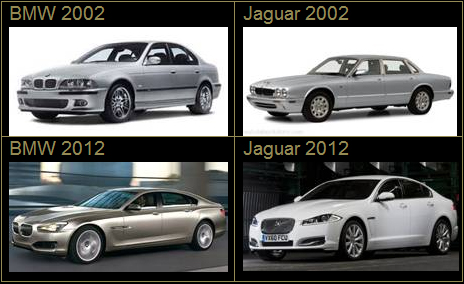
- Bookmark :
- Digg
- del.icio.us
- Stumbleupon
- Redit it
- Posted by - (3) Comment
|
|
Text: Aage Myhre, VilNews Editor-in-Chief/architect
aage.myhre@VilNews.com
Vilnius is called the "world's most Italian city outside Italy," and also "Europe's most baroque city north of the Alps". Before the Baroque made its appearance, Vilnius was considered one of the world's three leading Renaissance cities (!), in competition with Milan and Florence. However, although the Lithuanian architecture has its roots in Italy, it also developed its own distinctive character, which now once again delights and surprises visitors from near and far.
Unfortunately, this wonderful national heritage was not preserved and continued too well during the years when Lithuania was occupied by the Soviet Union. Also today, there is devoted minimal attention to this heritage, the very identity of Lithuania. Buildings and environments that have been completed over the past 20 years have too much become pale, indifferent copies of Western countries 'modernist architecture' instead of development projects based on Lithuania's phenomenal genuine, beautiful traditions in architecture and living environments.
Fortunately, there are still ancient urban districts and buildings throughout the country that remind us about what a proud and powerful identity Lithuania had in the past. And thankfully, authorities and many others understand that these fine monuments must be preserved as the proud bearers of identity they still are. Bravo!
But it surprises me greatly that today's architects and planners are not willing to listen to Lithuania's own ‘identity-music’ instead of following in the footsteps of the West’s often banalising, so-called modern architecture.
A Lithuanian architecture that honour and take into account the nation's identity would not cost more, it would make the new building environments more attractive and warm, and it would show the world that Lithuania is a proud nation with deep roots in culture and history, virtually unparalleled. So why wait?
Let me exemplify what I have in mind...
BMW and Jaguar
|
BMW 2002
|
Jaguar 2002
|
|
BMW 2012
|
Jaguar 2012
|
BMW cars have for many years developed in accordance with a significant identity line. A fast, sporty car that appeals to young, dynamic business people, albeit often with a faint 'mafia-touch'. BMW has remained true to this line and one can well see the relationship between current and earlier models.
Jaguar was long regarded as a ‘work of art’, designed to satisfy drivers with high demands for classic design combined with top performance. BMW was seen as a vehicle of raw power, while the Jaguar simply was aristocratic and beautiful. But then, for the latest models, Jaguar started making BMW-copies instead of sticking to their own identity as a car for connoisseurs. A little sad to see that lovely Jaguar fell for such a temptation, and thus made the car market a little less inspiring and versatile...
Lithuanian ‘identity architecture’ Anno 2012?
NEW BUILDINGS AT EXISTING STREETS IN OLDER URBAN AREAS:
As for renovation and new construction in older urban areas, I am convinced that one should stick very strictly
to the originals. If we are talking about a new building to fill in a gap in a row of houses, I believe one should strive to create identical copies of what once existed on the site. The building below, in Didzioji g here in Vilnius, in my opinion is a good example of exactly that. The building is less than 10 years old, but is built as a true copy of the building that once stood right here.
Some would say we in our time must be allowed to build, fill in, in styles that belong to our day, even in an older urban environment. I strongly disagree. For me, this sounds as an argument to introduce new items, colours, etc., in a genuine Rembrandt painting when it is being restored...

Copying the original building.
NEW BUILDINGS ON NEW SITES IN OLDER URBAN AREAS:
It is not often constructed new buildings here in Vilnius Old Town. There are simply very few vacant spaces.
But now is finally something happening. A brand new apartment complex is under construction in the heart of the Old Town, on a site that until recently was reserved for old garages from the Soviet era. Kotrynos Vartai is the name, a complex of apartments and two commercial premises being built at Klaipedos street next to St. Catherine’s Church and the Teachers’ House. The new complex takes carefully into account the Vilnius old town architecture. Bravo!

Keeping the original style.
NEW ARCHITECTURE ON SITES NEAR OLDER URBAN CENTRES:
I think a combination of genuine, original building materials, such as yellow-brown-red bricks will be a good
item to include in today's buildings outside the centre of Vilnius. In such a way we can pass on the legacy of centuries of good architectural traditions as we find them represented in the Vilnius Old Town. The more modern times may be well represented by a far more modern material, namely glass. Below I show three different ways to combine these two building materials. Distinct, modern, traditional and with dignity...
|
|
|
|
New building styles for districts near the old city centres of Vilnius, Kaunas and Klaipeda. Genuine building materials combined with glass, demonstrating respect and affiliation to the ancient ‘identity/architecture’ of Lithuania and at the same time looking to the future, demonstrating openness, light and distinctiveness.
|
LITUANIA’S ANCIENT IDENTITY ARCHITECTURE IS AS MUCH ABOUT OUTDOOR ROOMS AS ABOUT THE BUILDINGS THEMSELVES: What is happening between the buildings is as important as the buildings themselves, and is another utterly defining aspect of Lithuania’s identity architecture. Holistic thinking is a hall mark of this architecture. Just look at how perfectly well Vilnius Old Town functions as a symbiosis of buildings, streets, squares, ornaments, colours and more – in perfect harmony with people and the very life of the city! It is often so that the way the surroundings are planned determine whether a new project is successful or not, and Vilnius Old Town has a lot to teach us in this respect. The shapes of the outdoor rooms, and how they connect the buildings around, is extremely important for good urban planning. Streets, squares, lawns, parks, fountains, benches, lamp posts, parking are all elements that are supposed to play together and serve the people of any urban area. There are so many items to play with, even outdoors. Think water, fountains, bridges, decorations, ornaments; items that tell something about what happens inside the buildings around and the people using the buildings and the services offered, being it in an office building, a restaurant, a hotel or a service provider... And most important of all, all elements must have human dimensions. So that people who come to the building will be feeling well, feeling joy. All new buildings should radiate kindness and dignified service attitudes towards customers and the general public...
What is happening between the buildings is as important as the buildings themselves, and is another utterly defining aspect of Lithuania’s identity architecture. Holistic thinking is a hall mark of this architecture. Just look at how perfectly well Vilnius Old Town functions as a symbiosis of buildings, streets, squares, ornaments, colours and more – in perfect harmony with people and the very life of the city!
|
|
|
|
|
|
|
|
|
|
|
There are so many items to play with, even outdoors. Think water, fountains, bridges, decorations, ornaments;
items that tell something about what happens inside the buildings around, and the people using the buildings
and the services offered, being it in an office building, a restaurant, a hotel or a service provider...
- Bookmark :
- Digg
- del.icio.us
- Stumbleupon
- Redit it
A weekend of books in Vilnius – once again
- Posted by - (0) Comment
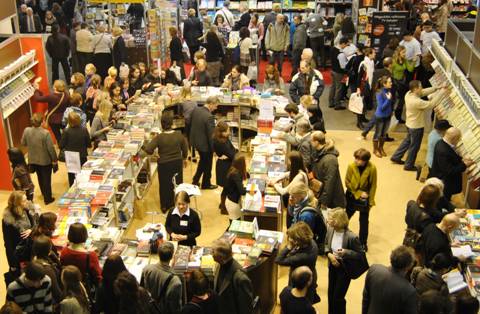
Text and photos: Diana Koval
An annual cultural refreshment weekend for all those who cannot imagine their life without books finally happened and as always it was fabulous. Vilnius International Book Fair for the 13th time opened its doors to the numerous visitors from all over the country. Last year there were about 60 thousands of them, and about the same amount of guests are expected to visit Litexpo exhibition center during this last weekend of February.
- Bookmark :
- Digg
- del.icio.us
- Stumbleupon
- Redit it
![]()

Dominican Father
David O’Rourke
As pastor of an old church, on brick foundations, in earthquake country I never go into any public building without making a mental note on how to get out – fast – if needed. I am also an opera fan, and always check on ‘what’s playing’ at the opera house before booking a flight to Vilnius. The cultural life in Vilnius is spectacular.
But, there has been – and at last look there still is – a heavy chain and padlock of one of the two sets of exit doors from the Opera House. I suppose that the old Soviet janitor who had the key has long since gone to whatever retirement. But if there were ever an emergency and everyone had to get out fast they would never make it.
But then, the man in charge of doors will say, “But there is that whole other set of doors – the entrance set – on the other side of the building.” Sure….
This locked exit door and the lack of hand rails to help going down the outside steps, by the way, has provided me with a metaphor of the Soviet system in one of my poems. Under Stalin and Co no one cared (or even wanted to think about) how you got out of a privileged place like the Opera, or how you went down after it was over. There was only going up. Going out, doing down, God forbid.
David O'Rourke
California, USA.
- Bookmark :
- Digg
- del.icio.us
- Stumbleupon
- Redit it
![]()
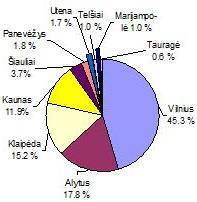
Number of tourists in accommodation establishments by city/county, IV quarter 2011
According to the provisional date of Statistics Lithuania, in IV quarter 2011, accommodation establishments received 376 thousand tourists, or 15.7 per cent by more than in the same quarter of 2010. The number of tourists from EU countries increased by 11.3 per cent, Lithuanian residents - 14.3 per cent, tourists from non-EU countries - by 24.8 per cent.
Most tourists came from:
- Russia - 35.1 thousand (in IV quarter 2010, 26.5 thousand),
- Belarus - 24.8 thousand (in IV quarter 2010, 22.8 thousand),
- Poland - 22.6 thousand (in IV quarter 2010, 22.9 thousand),
- Latvia - 17.3 thousand (in IV quarter 2010, 14.3 thousand),
- Germany - 15.1 thousand (in IV quarter 2010, 12 thousand),
- United Kingdom - 7.6 thousand (in IV quarter 2010, 8.3 thousand),
- Estonia - 7.1 thousand (in IV quarter 2010, 6.9 thousand),
- Finland - 6.7 thousand (in IV quarter 2010, 7.6 thousand).
In the last quarter of 2011, a quarter of tourists stayed in accommodation in the resort towns of establishments:
- Druskininkai received 64 thousand tourists, Which is by 20.2 per cent more than in IV quarter 2010,
- Palanga - 26 thousand tourists (29.8 per cent by more )
- Birštonas - 6.4 thousand (by 1 per cent more), Neringa - 2.5 thousand tourists (by 1.3 per cent more).
- Bookmark :
- Digg
- del.icio.us
- Stumbleupon
- Redit it
In 2011 Lithuanian hotels had 1.8 million visitors – 15.4% up year on year
- Posted by - (0) Comment
![]()
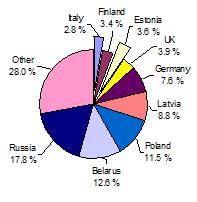
Number of foreign tourists in accommodation establishments by country, IV quarter 2011
In 2011, the accommodation establishments of Lithuania received 1.8 million tourists, or 15.4 per cent by more than in the same period of 2010, the number of foreign tourists amounted to 1 million (19.5% more).
- Bookmark :
- Digg
- del.icio.us
- Stumbleupon
- Redit it
- Posted by - (0) Comment
Lithuanian camps in
postwar Germany issued
their own money!
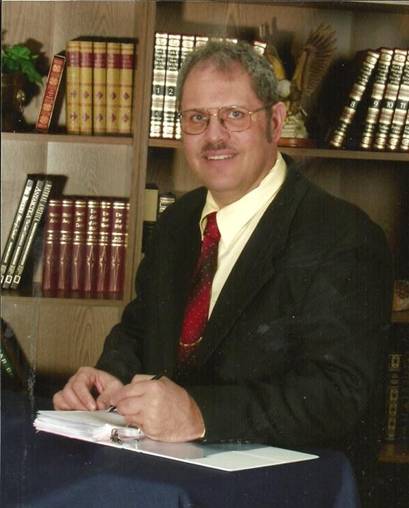
Frank Passic, Michigan, USA.
Dear readers,
We are delighted and honored that Mr. Frank Passic has graciously offered to share with us his vast knowledge of Lithuanian numismatics. In this first article he provides us with a very interesting look into how Lithuanians living in Displaced Persons camps, following World War II, dealt with the situation of currency to help them survive in their daily lives.
Frank Passic of Albion, Michigan has collected, researched, and written about Lithuanian numismatics for many years. His educational displays of Lithuanian money have won numerous awards at state and national coin shows in the United States. Of Lithuanian heritage, his maternal grandparents emigrated from Lithuania to America just prior to World War I. Frank may be contacted at: albionfp@hotmail.com
We know you will enjoy this first article and Mr. Passic has agreed to share with us many more of his writings so we definitely have a lot to look forward to – Ačiū labai Frank
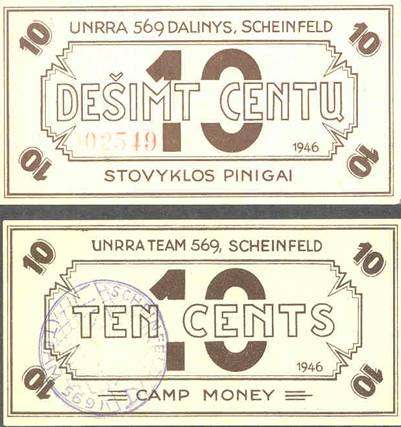
Money from the Scheinfeld Displaced Person Camp.
Bavaria, Germany, 1946.
- Bookmark :
- Digg
- del.icio.us
- Stumbleupon
- Redit it
- Posted by - (4) Comment
|
Dear
readers,
We
are delighted and honored that Mr. Frank Passic has graciously offered to
share with us his vast knowledge of Lithuanian numismatics. In this first
article he provides us with a very interesting look into how Lithuanians
living in Displaced Persons camps, following World War II, dealt with the
situation of currency to help them survive in their daily lives.
Frank Passic of Albion, Michigan has collected, researched, and written about Lithuanian numismatics for many years. His educational displays of Lithuanian money have won numerous awards at state and national coin shows in the United States. Of Lithuanian heritage, his maternal grandparents emigrated from Lithuania to America just prior to World War I. Frank may be contacted at: albionfp@hotmail.com We know you will enjoy this first article and Mr. Passic has agreed to share with us many more of his writings so we definitely have a lot to look forward to – Ačiū labai Frank Also
have a look at: http://www.albionmich.com/
Su
pagarbe – Vincas Karnila
|
Lithuanian camps in postwar Germany issued their own money!

Frank Passic.
By
Frank Passic, Albion, Michigan.
albionfp@hotmail.com
In May 1945 Europe was in shambles. With the fall of the Nazis, Germany was sliced into Allied zones, and the process of rebuilding Europe began. War and its aftermath had uprooted thousands of people from their homes and countries, and many found themselves liberated from Nazi concentration camps with no place to go.
The care of refugees in Europe was handled by the United Nations Relief and Rehabilitation Administration (UNRRA) until 1947, when responsibility was transferred to the International Refugee Organization (IRO), which also was a function of the United Nations. These refugees became known as displaced persons (DPs), and the Allied powers soon realized they had a delicate problem to solve.

A camp publication features this photograph of "Lithuania,
Latvia and Estonia..
.waiting for the dawn of
their independence."
By the end of the War, roughly 70,000 Lithuanians had made their way into Germany and Austria. At first, the Allied powers thought these people took up residence in western Germany against their will and that they naturally would prefer to return to their homeland, but such was not the case. Lithuanians who had made it to the West did not want to relocate back to their Soviet-occupied homeland.
The Allies, including the United States, initially accused Lithuanian DPs of being former Nazi sympathizers. They later realized that the actual reason for their reluctance to return to their country was based on the fact that having witnessed the Soviet atrocities in Lithuania in 1940-41, they certainly would be executed or deported to Siberia if they set foot on their native soil. Still, to the horror of many, some were forcibly sent back by the Allies, never to be heard from again.

A satirical drawing shows Lithuanians feeing Stalin's rays. The
caption translates,
"In our land there
is still Big Heat."
Accordingly, suspicion and distrust ran high in DP camps housing Lithuanian refugees. A large percentage of the inhabitants were professionals – physicians, engineers, jurists, teachers, public officials, artists and clerks – and would have been targeted instantly by the Soviet occupational regime if they returned home.
Gradually, western nations accepted the reality of the situation and opened their doors to large numbers of immigrants from DP camps. Many DPs made their way to new lives in the United States, Canada, Australia, Great Britain, and Argentina in the late 1940s and early 1950s.
Many DP camps issued their own internal currency, which was used to pay workers and others within their confines. Generally, the money was spent at the canteen or “P.X.” for needed supplies. A virgin field for collectors and researchers alike, DP camp money has caught the attention of numismatists in recent years. Examples would sometimes appear in estates as former camp members became deceased.

A
Lithuanian cartoon depicts DPs "acting on Uncle Truman's cake."
With few exceptions, DP camp money research is scattered, and numismatic information is often incomplete. However, one must bear in mind that each camp’s money was redeemed and destroyed, and residents had little cause to save it.

Pictured is Schwarzberg Castle, a 17th century structure that
served as the site of a
Lithuanian DP camp in
Scheinfeld, a small town in Bavaria.

UNRRA Food Stores employees at the Lithuanian DP camp in
Seedorf.

Camp administrators draw rations from the canteen.
There were several Lithuanian Displaced Persons camps which issued camp money, such as: Scheinfeld, Regensburg, Bad Worishofen, Ludwig, and Nordlingen, which will be discussed here.
SCHEINFELD
Atop a sandy slope on the outskirts of Scheinfeld, a small town in Bavaria halfway between Nuremberg and Wurzburg, sits a 17th century castle built by the Schwarzenberg family. It was in the imposing structure that a Lithuanian DP encampment was established on April 28, 1946, to house 1500 Lithuanians transferred from the DP camp in Regensburg. The camp was headed by an American reserve officer of Lithuanian descent, Stanley B. Milnus, whose parents had come from the Vilnius region of Lithuania. Chairman of the camp’s committee was Professor Ceslovas Masaitis, a Lithuanian mathematician.
Administered and occupied entirely by Lithuanians, the Scheinfeld camp was liquidated in 1949 after its administrator, Steponas Birutis, left for America. Committee chairman Masaitis later instituted a Lithuanian fraternal order in the United States that carried the “Scheinfeld” name. 1
The DP issues of Scheinfeld, Team 569, are perhaps the most familiar of the Lithuanian camp money. Originally unknown in numismatic circles, the money suddenly appeared on the market in the early 1970s, when a small hoard surfaced in England. Because the specimens were in nearly Uncirculated condition, many doubted if the money was actually put to use. Furthermore, interviews with former DPs reveal that German and military monies circulated within the camp, and no one remembered ever seeing camp money.
However, UNRRA records for the Scheinfeld camp have shed some light on the mysteries surrounding the currency used in camp. In a report dated June 15, 1946, UNRRA Team 569 Director Anton A. Pritchard stated:
In the month since the camp has been opened, the following welfare projects have been organized:
1) A camp
newspaper is published daily with an English translation for the director;
2) An amenity Canteen is functioning with great success;
3) We have established an internal money system by which workers are paid and
which works in conjunction with the Canteen…
Under the present Canteen System of paying workers and the anticipated cessation of American cigarettes from Red Cross parcels, present supplies of amenity items will not meet the demand, and an internal economic crisis can be foreseen. Particularly items needed are shaving soap, cigarettes, razor blades, brilliantine, hair and bobby pins, combs.
The following suggestions are respectively submitted, with the full realization of their lack of originality:
1) That
amenity supplies (Canteen) be increased so that economic stability can be
maintained and so that payment for working can be kept sufficiently attractive;
2) That a source of cigarettes can be found. 2
Another report, dated July 15, 1946, reiterates the creation of an internal camp money system and the scarcity of amenities. 3
Therefore it appears that Scheinfeld Lithuanian camp money was used in the canteen from May through July 1946. However, because of acute shortages of goods, opportunities to actually spend the money were greatly diminished, and the monetary system subsequently was abandoned.
It is surmised that all Scheinfeld notes were destroyed, with one authority keeping an estimated fifteen sets as souvenirs, thus accounting for the hoard which surfaced in England.

10 cents

50 cents

One dollar
Scheinfeld camp money is bilingual – Lithuanian on the obverse, English on the reverse. All notes feature a red serial number on the face, while a blue, hand-stamped “Scheinfeld UNRRA (Team 569)” emblem resembling a globe appears on the back. Issued in denominations of 10 and 50 centu and 1 doleris, the notes bear the inscription UNRRA TEAM 569, SCHEINFELD / (denomination) / CAMP MONEY in Lithuanian and English.
|
DENOMINATION |
COLOR |
SIZE |
|
10 centu |
Light green |
104 x 51mm |
|
50 centu |
Dark green |
118 x 63mm |
|
1 doleris |
Tan |
155 x 70mm |
REGENSBURG
Until the establishment of the Scheinfeld camp in April 1946, its 1500 residents were interred at the DP camp in Regensburg. Apparently, Scheinfeld camp money was patterned after the money circulated at Regensburg, for a 1-dollar note in a private collection is identical to the Scheinfeld 1 doleris, except that the text on both sides is in English.
|
DENOMINATION |
COLOR |
SIZE |
|
1 dollar |
Tan |
155 x 70mm |
BAD WORISHOFEN
The Lithuanian encampment in Bad Worishofen was located 65 kilometers west of Munich. A product of Team 558, notes circulating in this DP camp were issued in denominations of 1, 5 and 20 units and shared the same dimensions. The English inscription reads D.P. CENTER BAD WORISHOFEN / UNRRA (denomination) UNITS / UNRRA / TEAM 558. A six-digit serial number printed in red appears at the bottom center, and a leafy design surrounds the perimeter. In the lower left corner, outside the border appears in German, DRUCK: HANS HOLZMANN, BAD WORISHOFEN, VII. 46. 15000, which translates “Printed by Hans Holzmann, Bad Worishofen, July 1946, 15000 printed.”
|
DENOMINATION |
COLOR |
SIZE |
|
1 unit |
Light Yellow |
110 x 76mm |
|
5 units |
Peat |
110 x 76mm |
|
20 units |
Green |
110 x 76mm |

Five units
LUDWIG
The Lithuanian encampment in Ludwig was part of the Dillingen UNRRA district, Team 308. Money used in this camp consisted of two issues; the first was printed on white paper, the second on light-violet paper. Initially, the notes were used to pay day laborers, but eventually all the camp’s inhabitants received payment in this form, with men receiving white notes and women receiving violet notes!
Issued in denominations of 1, 2, 5, 10 and 50 units, the Ludwig camp money was designed by Lithuanian artist Antanas Rukstele (1906-1990), a well-known as a painter and ethnographer. Rukstele had served as curator of the Ciurlionis Art Gallery and the ethnographic section of the Museum of Culture in Kaunas, Lithuania. As a painter he was responsible for a great many landscapes, portraits, thematic compositions and book illustrations.

Rukstele lived in the Ludwig DP camp until 1949 and emigrated to the United States in 1955. Apparently, UNRRA officials were so pleased with Rukstele’s artwork that they used his same basic design for the Polish DP money issued in the Luitpold camp, also in the Dillingen district.
UNRRA records confirm the use of camp money in the Dillingen district. In May 1946 Team 308 Field Supervisor G.C. Brooke wrote:
The Welfare Department has prepared a new currency system based on rationing amenities supplies. Every resident is given a prescribed number of points, and further points are added for workers according to the tasks involved. Additional points are given to sick and old people, students and nursing mothers. 4
In a later report, Brooke stated:
The team has now a Point system operating for P.X. and amenity supplies. The object of the scheme is to allow a fair distribution of supplies to all camp dwellers, with special facilities offered to the various working groups. The Principal Welfare Officer reports that it has been a stimulant to the D.P.’s to seek engagement in some form of camp activity. 5
The design on the Ludwig notes consists of a Lithuanian tulip motif, which together with the UNRRA emblem, is printed in green. The text and unit numerals are overprinted in red. All the notes employed the same design, allowing for their “generic” use, and the face of each reads LITHUANIAN D.P. CENTER LUDWIG DILLINGEN / UNRRA UNITS / TEAM 308. A serial number is printed in red at the bottom center, slightly to the right. The initials of the artist, “AR,” appear on the bottom border to the left of center. Two different colors of paper were used. Notes printed on white paper were for the men, and notes with the violet paper were for women.
The back, printed in Lithuanian, translates “The falsification and counterfeiting of Camp Marks is a punishable offense.” Although the denominations are in units, the penalty clause reveals that the money was connected with Germany’s mark monetary system.
|
DENOMINATION |
COLOR |
SIZE |
|
First issue |
|
|
|
1 unit |
White |
85 x 55mm |
|
2 units |
White |
85 x 55mm |
|
5 units |
White |
85 x 55mm |
|
10 units |
White |
112 x 68mm |
|
50 units |
White |
112 x 68mm |
|
Second issue |
|
|
|
1 unit |
Violet |
85 x 55mm |
|
2 units |
Violet |
85 x 55mm |
|
5 units |
Violet |
85 x 55mm |
|
10 units |
Violet |
112 x 68mm |
|
50 units |
Violet |
112 x 68mm |
NORDLINGEN
Fifty-five kilometers from Dillingen, the Nordlingen camp housed 500 Latvians and Lithuanians. In describing the camp money of the Dillingen district, Field Supervisor Brooke reported:
The camp P.X., working on a “point” system, is gradually becoming firmly established, and the system has been extended to the Nordlingen Camp. The D.P.’s are almost enthusiastic regarding this type of payment, and it has certainly increased the desire to work. 6
To date, no money of the Nordlingen camp has surfaced, although it would be logical to assume that it featured the same design as that of the Ludwig camp money. According to records, the Nordlingen issues began to circulate sometime in June 1946.


Luitpold Polish note Face
side Back side
FOOTNOTES
1. A concise history of the Scheinfeld camp and its money appears in the IBNS Journal, 18, No. 4 (1980).
2. UNRRA Monthly Team Report, United Nations, Scheinfeld Team 569, June 15, 1946, p. 6.
3. UNRRA Monthly Team Report, United Nations, Scheinfeld 569, July 15, 1946, p.
6
4. Letter to S. Zisman from G. C. Brooke, Field Supervisor Team 308 Dillingen.
United Nations, UNRRA District No. 5, Munich, May 16, 1946, p. 2.
5. Letter to S. B. Zisman, District Director, from G. C. Brooke, Field
Supervisor Team 308 Dillingen. United Nations, UNRRA District No. 5, Munich,
June 17, 1946, p. 2.
6. Letter to S. B. Zisman, District Director, from G. C. Brooke, Field Supervisor Team 308 Dillingen. United Nations, UNRRA District No. 5, Munich, July 16, 1946, p. 3.
Bibliography
Dypukas, No. 1. Kempten, Germany: August 1946.
Encyclopedia Lituanica. 1975 ed., Vol. IV, s.v. “Refugees,” by Simas Suziedelis.
Kreivenas, Juozas. “UNRRA D. P. Camp Money.” The Knight, 3 (April-May 1981), p. 1, 2.
Lietuviu Enciklopedia. 1962 ed., Vol. XXVII, s.v. “Scheinfeld,” by A. Bendorius.
Narkeliunaite, S. ed. DP Baltic Camp at Seedorf, 1946-1947. UNRRA Team 295 B.A.O.R.
Pasilaitis, Juozas. Hearken Then Judge, Sidelights on Lithuanian DPs. Patria: Tubengen-Stuggart, 1947
Passic, Frank. “The Lithuanian DP Camp Money of Scheinfeld.” IBNS Journal, 18 (1980), pp. 119-121.
Passic, Frank and Feller, Steven A. “Displaced Persons Camp Money.” The Numismatist, August 1984 pp. 1602-1617.
________. “UN Records Confirm Scheinfeld Camp Money Use!” The Knight, 6, No. 2, p. 1, 2.
Pick, Albert and Carl Siemsen. Das Lagergeld der Konzentrtations – und D. P. Lager, 1933-1945. Munchen: Baltenberg Verlag, 1976.
Slabaugh, Arlie. Prisoner of War Monies and Medals. Chicago: Hewitt Brothers, 1966.
United Nations. UNRRA District No. 5 Munich. Letter to S.B. Zisman from G.C. Brooke, Field Supervisor Team 308 Dillingen, May 16, 1946
________. UNRRA District No. 5 Munich. Letter to S.B. Zisman from G.C. Brooke, Field Supervisor Team 308 Dillingen, June 17, 1946
________. UNRRA District No. 5 Munich. Letter to S.B. Zisman from G.C. Brooke, Field Supervisor Team 308 Dillingen, July 16, 1946
________. UNRRA Monthly Team Report. June 15, 1946, Team 596, Scheinfeld. UNRRA File 3.0.11.3.2, Box 54
________. UNRRA Monthly Team Report. July 15, 1946, Team 596, Scheinfeld. UNRRA File 3.0.11.3.2, Box 54
Special thanks to the Balzekas Museum of Lithuanian Culture in Chicago for DP Camp reference material.
- Bookmark :
- Digg
- del.icio.us
- Stumbleupon
- Redit it
- Posted by - (0) Comment
| More about money… | ||
 |
Russian Rouble – invented in Lithuania? |
|
 |
President Smetona on the 10-litas note |
|
 |
1st and 2nd round of Lithuanian litas |
|
 |
Vagnorkės – Talonas 20 years anniversary |
- Bookmark :
- Digg
- del.icio.us
- Stumbleupon
- Redit it
VilNews e-magazine is published in Vilnius, Lithuania. Editor-in-Chief: Mr. Aage Myhre. Inquires to the editors: editor@VilNews.com.
Code of Ethics: See Section 2 – about VilNews. VilNews is not responsible for content on external links/web pages.
HOW TO ADVERTISE IN VILNEWS.
All content is copyrighted © 2011. UAB ‘VilNews’.

 Click on the buttons to open and read each of VilNews' 18 sub-sections
Click on the buttons to open and read each of VilNews' 18 sub-sections 







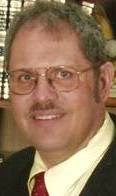














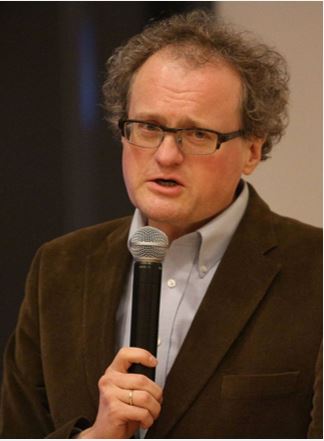

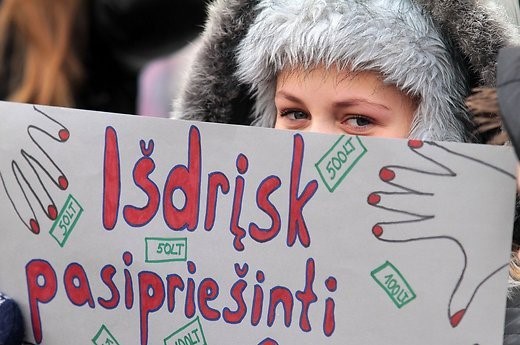


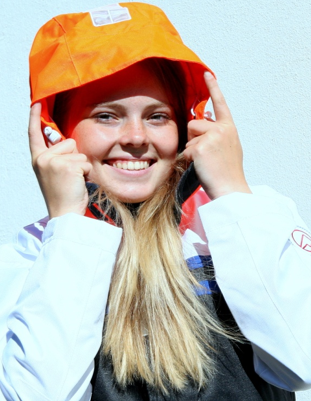
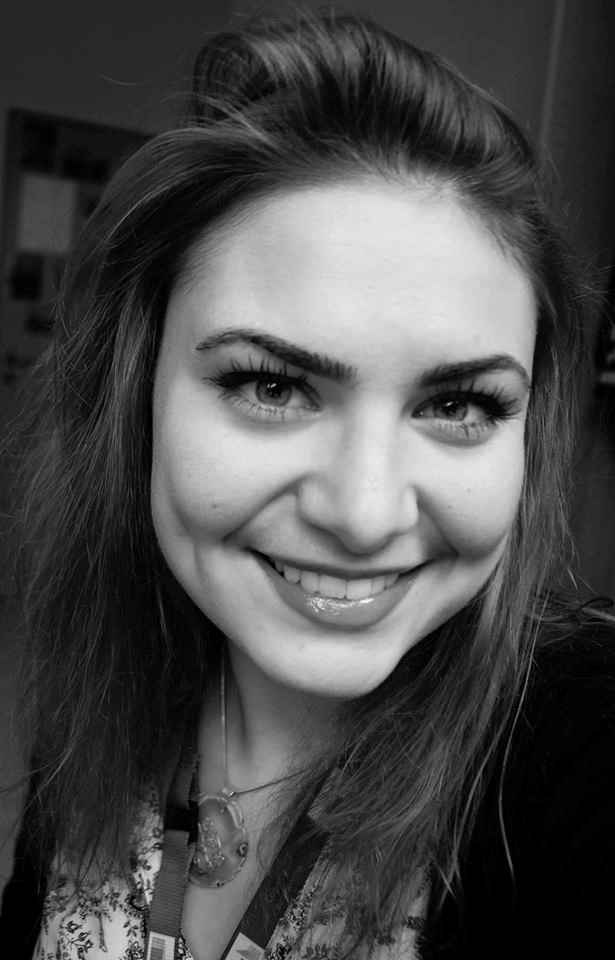

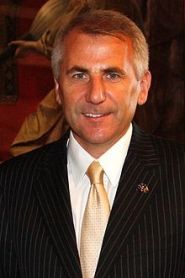
.jpg)
